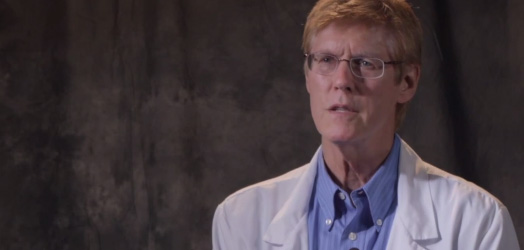Cryotherapy means using extremely cold temperatures to freeze and destroy cancer cells. Also called cryoablation or cryosurgery — though not actually a form of surgery — cryotherapy relies on the principle that cancer cells are typically more sensitive to freezing than normal cells. So when an area affected by cancer is exposed to the very low temperatures, cancer cells die while normal cells survive the treatment. While cryotherapy can be used to treat earlier-stage prostate cancer, it isn’t used as the first treatment. It is also a great option for treating prostate tumor that’s resistant or recurs after radiation therapy. However, like brachytherapy, this treatment is not ideal for men with enlarged prostate glands.
How is it performed?
During cryotherapy, the doctor uses a trans-rectal ultrasound (TRUS) to direct several hollow needles (probes) through an incision made on the skin between the scrotum and anus and into the prostate. A very cold (freezing) fluid, such as argon gas or nitrogen liquid, is infused into the prostate via the probes (needles) and used to freeze and kill cancerous prostate cells. To prevent damage to healthy, nearby tissues, the doctor uses the ultrasound to carefully monitor the process and target the tumor with more precision.
Also, to prevent urethral damage, a warm saline solution is circulated via a catheter in the urethra to stop it from freezing. The catheter may be left in place for many weeks afterward to enable the bladder to empty during recovery. Cryotherapy requires epidural (spinal) or general anesthesia. After the procedure, patients may remain in the hospital overnight, although many usually leave on the same day.
How cryotherapy works
Living cells — normal or abnormal — cannot endure extreme cold. That’s why when the prostate gland is infused with liquid nitrogen or argon gas it quickly loses heat, the ice balls or ice crystals swell instantaneously, and the cell membranes rupture, followed by tissue damage and then cell death. After cancer is destroyed, the dead cells and tissues are cleaned up from the body by white blood cells. Also, the body’s immune system is triggered to strike out, attack and destroy any remaining cancer cells.
Cryotherapy provides several advantages over radiation and surgery, particularly in early-stage prostate cancer. It’s a less invasive procedure that can be performed using spinal or epidural anesthesia instead of general anesthesia. This is especially important when treating prostate cancer in older men. It is also beneficial for men with prostate cancer occurring simultaneously with conditions such as lung disease, heart disease or diabetes. Cryotherapy causes less blood loss, pain and swelling, requires shorter hospital stay (1-2 nights) and involves a shorter recovery period. Also, when necessary, cryotherapy can be followed by surgery or radiation therapy.
Effective alternative to radiation therapy
Even with early intervention and prompt radiotherapy, about 30-40 percent of men still experience a return of prostate cancer. Hence, further treatment is almost always necessary after radiation therapy. Cryotherapy is a great option for preventing cancer recurrence or treating recurrent prostate cancer in cases where the initial radiation therapy fails to kill enough cells. The need to use cryotherapy is determined by conducting follow-up PSA tests after radiotherapy. High PSA levels after radiotherapy implies either radio-resistance or incomplete eradication of cancer cells and cryoprobes can then be used to prevent a recurrence, particularly when the tumor is still localized. When used this way, cryotherapy is very effective — freezing the area and killing cancer cells while sparing normal cells. For more information on safe, effective treatment of prostate cancer, visit the “Advanced Urology Institute” site.


